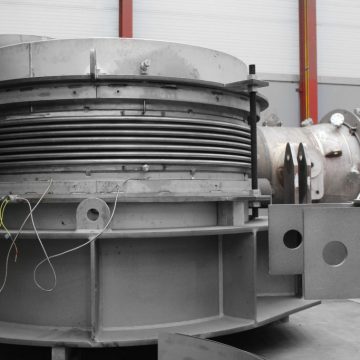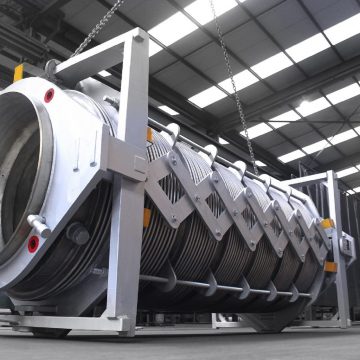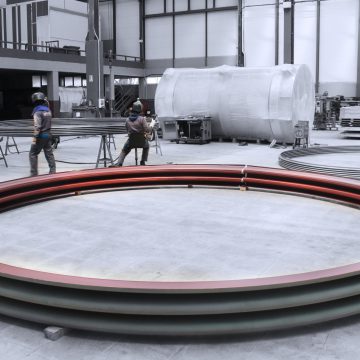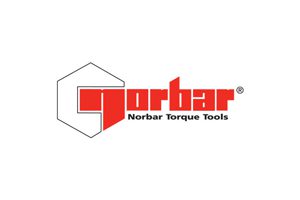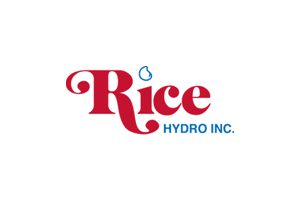Metal Expansion Joints
Metal Bellows & Expansion Joints
Metal bellows expansion joints are used as components in piping or as parts of pressure vessels.
An expansion joint is any apparatus containing one or more metal bellows used to absorb dimensional changes such as those caused by thermal expansion or contraction of a pipeline, duct, or vessel and to absorb vibrationscaused by engines, pumps, motors, etc.
In other words, a metal expansion joint is a device primarily formed by flexible bellows used to absorb movements in a piping system while containing pressure and a medium running through it.
The key element of an expansion joint is the bellows. The bellows is a flexible element consisting of one or more corrugations and the end tangents.
A corrugation (convolution) is the flexible unit of a bellows and end tangents are the straight un-corrugated portions at the ends of a bellows.
The flexibility of the bellows is derived from the inherent flexibility of the corrugation given its shape and its own design.
In the design and construction of the bellows, in addition to considering that they must be flexible and such flexibility must be controlled, other operating parameters such as pressure, temperature and chemical resistance to fluid passing through them must be taken into account.
Expansion Joints keeps buildings safe & crack free.
Expansion joints and metal bellows are vital components in a huge range of industrial settings. They play a vital role in equipment which needs to withstand high pressures, whether that is from gases or liquids. The units are designed to safely and reliably expand under pressure, and take prescribed temperatures in their stride. They can be formed from common metals such as stainless steel in various grades, and more exotic alloys such as Inconel can be used as per your requirements.
Movements
Three basic movements can be absorbed by an Expansion Joint
Axial Movement is the change in dimensional length of the bellows from its free length in a direction parallel to its longitudinal axis.
Angular Movement is the rotational displacement of the longitudinal axis of the bellows toward a point of rotation.
Lateral Movement is the relative displacement of one end of the bellows to the other end in a direction perpendicular to its longitudinal axis.
MACOGA Rubber Expansion Joints are manufactured considering
- Chemical Resistance
- Temperature Resistance
- Pressure Resistance
- Movement Absorption Capabilities
- Weather, Ozone & UV - Resistance
Advantages
- Little space required for installation
-
Absorption of movements in multiple
directions due to their inherent flexibility - They require no maintenance
- They reduce load and temperature loss to a minimum
Quality Approvals
- E.J.M.A. (Expansion Joint Manufacturers Association, Inc.)
- ISO 9001:2015
- BUREAU VERITAS TYPE APPROVAL
- LLOYD'S REGISTER TYPE APPROVAL
- ASME “U” Stamp







